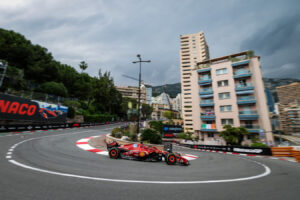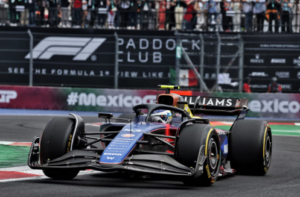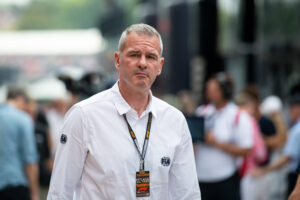September 11th 1978 marked the death of one of Formula 1‘s most talented drivers. The Italian Grand Prix held one day earlier on the 10th would mark the final race start of Ronnie Peterson, where the Lotus driver would be involved in an accident on lap one. Peterson would succumb to his injuries sustained in the accident following complications, dying at the young age of 34 years old.
Ronnie Peterson: The Champion That Never Was
Born on February 14th 1944 in Orebro, Sweden, Ronnie Peterson began his racing career in karts where he developed his iconic and breathtaking sideways driving style, using the four wheel drift in his racing.
After reaching the peak of the European Karting scene, Peterson graduated to racing in cars in 1966, making his debut racing in the competitive Formula 3 championship driving a car built by his father. After winning the prestigious Formula 3 support race on the weekend of the Monaco Grand Prix, Peterson became the F3 champion in 1969. This paved Peterson’s way to Formula 1, where the Swedish driver would make his debut in 1970.
Peterson made his Formula 1 debut in 1970 driving a V8 Cosworth powered March 701, run by the Antique Automobiles Racing Team. Peterson finished the season without scoring any points, being non classified in the championship. Despite this, Peterson was later signed by the March factory team for the 1971 season.
1971 would mark a successful stint at March for Peterson, securing five podium finishes over the course of 11 races in the championship. Through this, Peterson finished second in the standings, being runner up to Jackie Stewart. In the same year, Peterson also competed in the Formula 2 championship, where be became champion. Peterson remained at the team in 1972, however, left in 1973, heading to Lotus to partner Emerson Fittipaldi – the 1972 World Champion.
1973 marked Peterson’s breakthrough year in Formula 1, securing his first Grand Prix victory in an incident-filled French Grand Prix held at the Paul Ricard Circuit. Peterson went onto score a further three wins in 1973 in Austria, Italy, and in the United States, claiming third in the championship, despite having six retirements – five of which were reliability related. Also in the 1973 season, Peterson claimed his first Formula 1 pole position, qualifying in first place for nine of the 15 races in the season.
Fittipaldi left Lotus ahead of the 1974 Season, heading for McLaren, leaving Peterson as the number one driver alongside Jacky Ickx. In 1974, Peterson claimed another three wins, winning at Monaco, France, and Italy. Peterson also suffered from a further six retirements, with five of them being reliability related. Through his performances, Peterson finished fifth in the championship.
Peterson remained at Lotus for the 1975 Season, however, with the Lotus 72 losing its competitive edge, 1975 was unsuccessful for the Swedish driver. Peterson finished the season in 13th place in the standings, only having six points to his name. This prompted Peterson to leave Lotus to rejoin March for the 1976 Season.
1976 again marked a season of mixed success for Peterson. Despite winning the Italian Grand Prix for the third time in his career, the ‘SuperSwede’ finished 11th in the championship, finishing in the points in only one other race in the season. Peterson retired from ten of the 16 Grand Prix of 1976, with his season being filled with accidents and plagued by reliability issues. Peterson departed with March once again at the end of the season, joining Tyrrell for 1977.
Driving the six-wheeled Tyrrell P34, 1977 was once again an uncompetitive season for Peterson. Reliability plagued the driver over the season, causing him to retire from ten of the 16 races for a second season in a row. This season marked a low point in Peterson’s career, with the driver only having one podium finish over the course of two years with a third place at the 1977 Belgian Grand Prix – a finish which allowed the Swedish driver to finish 14th in the standings.
Peterson surprised many in the paddock when he announced that he would be rejoining Colin Chapman‘s Lotus team for the 1978 Season. In the contract, Peterson would act as the number two driver in the team to Mario Andretti – something that Andretti himself questioned.
1978 marked a strong return for Peterson, racking up three pole positions, three fastest laps, and an impressive seven podium finishes with two of which being wins. With four races to go and 36 points still available, Peterson was still in the hunt to take the championship from Andretti, being only nine points away from the American.
Peterson’s opportunity to take the championship from his team mate was tragically snatched away at the Italian Grand Prix, where Peterson was involved in a first lap accident after being tagged by James Hunt. The contact with Hunt caused Peterson’s Lotus to spear into the inside barrier at high speed, bursting into flames. After sustaining minor burns and having his legs severely broken in the crash, Peterson was taken hospital to undergo surgery to stabilize the breaks in his legs. Following surgery, Peterson’s condition deteriorated overnight, with marrow entering his blood stream, causing the formation of a fat embolism. Peterson was declared dead on the morning of September 11th 1978.
Ronnie Peterson was one of the fastest drivers of his time in the 1970s, being famous for having raw pace in his racing. Dying at the young age of 34, Peterson still had a lot ahead of him in his career, having signed to drive for McLaren in the 1979 Season.
With Peterson being taken away too soon, one can only wonder what Sweden’s most successful Formula 1 driver could have achieved, being competitive in Formula 1 from his debut in 1970 to his final season in the sport in 1978.
Still today it is widely wondered by many what Ronnie Peterson could have achieved in 1978 if he was not the second driver for Lotus but was on equal terms with Andretti, and if he could have taken the championship.
On and off the track, Peterson was loved by all.
In an interview with Sky Sports, Motorsport journalist Nigel Roebuck described Peterson as “quiet”, “modest”, and “gentle”, stating that the “persona of the man was so utterly different from the personality of the racing driver”.
In his nine seasons in Formula 1, Ronnie Peterson entered 123 Grand Prix, securing ten victories, 26 podiums, 14 pole positions, and nine fastest laps.
From the past, to the present, and into the future, Peterson will remain as an icon and will remain as one of the fastest drivers that Formula 1 has ever seen, being remembered as the champion that never was.






